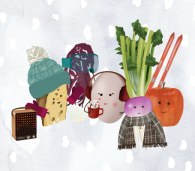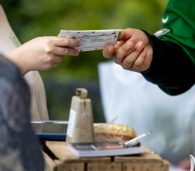School Spotlight: FoodPrints Science Instruction at Watkins Elementary
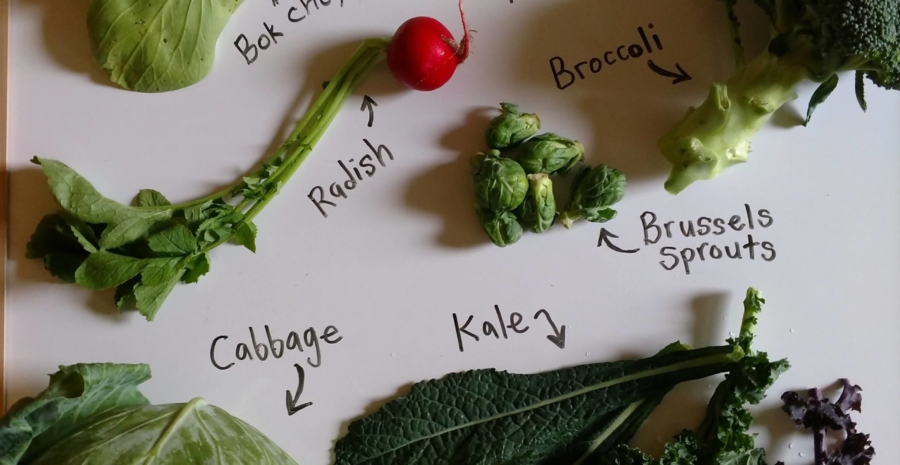
Since the beginning of this school year, the FoodPrints teaching team at Watkins Elementary has been delivering virtual FoodPrints lessons with a science focus to 1st through 5th grade students through the use of the FoodPrints Curriculum, movement, art, and music-based learning.
Lead Educators, Ms. Thomas and Ms. Vincent, use a mix of engagement strategies, tools, and instruction styles to get students excited about the big ideas in our FoodPrints plant and life science lessons — exploring a series of guiding questions to engage students in inquiry-based investigations. Vincent says, “We’ve had a lot of fun building in activities and investigations that include movement, creative thinking, and making some of the science activities into scavenger hunts and games to really engage the kids.”
Here’s a glimpse into what FoodPrints science instruction looks like for Watkins Elementary students:
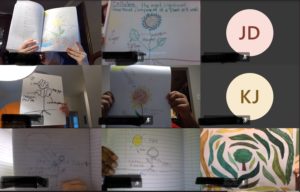 Plant Life Cycles, Grade 3: Along with their teachers, students review the plant life cycle by acting it out — they first ball up into a tiny seed, and then slowly demonstrate with their bodies the process of sprouting roots, stems, and leaves to become a fully grown plant. After this movement-based activity, students participate in an investigation in which they imagine the offspring of two different parent plants. Students brainstorm and share their ideas, and then draw diagrams of plant offspring of their own creation. In one third grade class, students drew models of hybrid broccoli-radish plants and brussels sprout-cauliflower plants, based on their new understanding of the inheritance of traits.
Plant Life Cycles, Grade 3: Along with their teachers, students review the plant life cycle by acting it out — they first ball up into a tiny seed, and then slowly demonstrate with their bodies the process of sprouting roots, stems, and leaves to become a fully grown plant. After this movement-based activity, students participate in an investigation in which they imagine the offspring of two different parent plants. Students brainstorm and share their ideas, and then draw diagrams of plant offspring of their own creation. In one third grade class, students drew models of hybrid broccoli-radish plants and brussels sprout-cauliflower plants, based on their new understanding of the inheritance of traits.
Weather & Seasonality, Grade 5: Class starts off with an enthusiastic game of trivia. Students answer questions about different types of weather, the seasons, and how our gardens change with the seasons. After trivia, students engage in a discussion about seasonality and why different plants grow in different seasons. To help students make connections to their school garden, they watch a short video created by master gardener, Ms. Percival, who takes them on a tour of the Watkins school garden and shows them what is able to grow during the winter. Then students illustrate their own seasonality charts that show the different types of fruits and vegetables that are available in Washington, DC during each season.
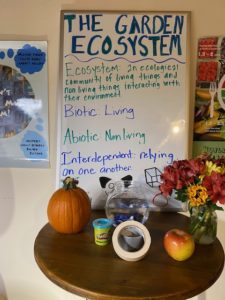 The Garden Ecosystem, Grade 3: Ms. Thomas and Ms. Vincent said that they can often tell the level of student engagement by the questions students ask. When discussing whether something was living or nonliving, one student asked which category stars would fall under and another student asked about soil. (Great questions, indeed!) Student enthusiasm increased even more when they participated in a scavenger hunt — a Watkins teaching assistant writes, “They were extremely engaged and super excited when sharing their examples of abiotic and biotic things they found in their homes.” Allowing space for student questions as well as highly engaging investigations, FoodPrints teachers bring science to life in students’ own homes.
The Garden Ecosystem, Grade 3: Ms. Thomas and Ms. Vincent said that they can often tell the level of student engagement by the questions students ask. When discussing whether something was living or nonliving, one student asked which category stars would fall under and another student asked about soil. (Great questions, indeed!) Student enthusiasm increased even more when they participated in a scavenger hunt — a Watkins teaching assistant writes, “They were extremely engaged and super excited when sharing their examples of abiotic and biotic things they found in their homes.” Allowing space for student questions as well as highly engaging investigations, FoodPrints teachers bring science to life in students’ own homes.
Ms. Thomas and Ms. Vincent shared that students are consistently communicating their comprehension of the big ideas of the lessons through their thoughtful questions, hand-drawn detailed diagrams, enthusiasm during movement based activities, and the occasional guitar solo. Through creativity, collaboration, and the goal of making science meaningful and relatable for students while they are at home, FoodPrints science instruction at Watkins has been a successful outcome of virtual learning.
FoodPrints at Watkins this year was partially supported by the Capitol Hill Community Foundation.

